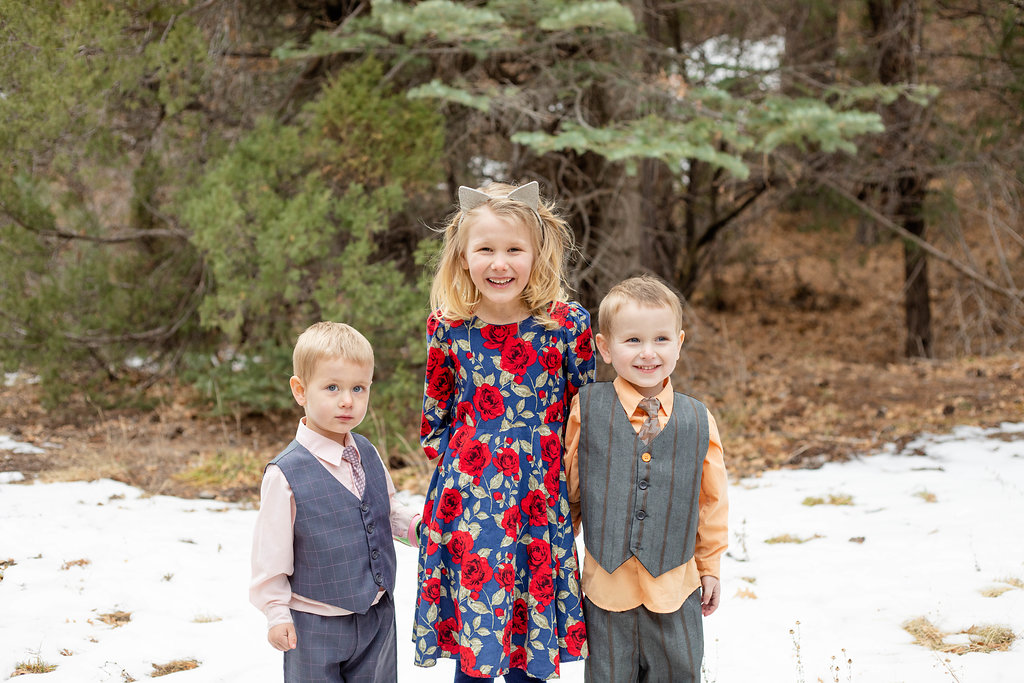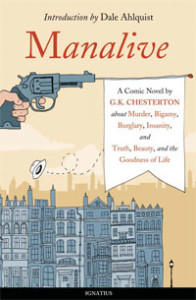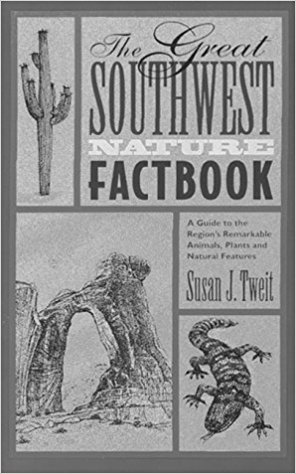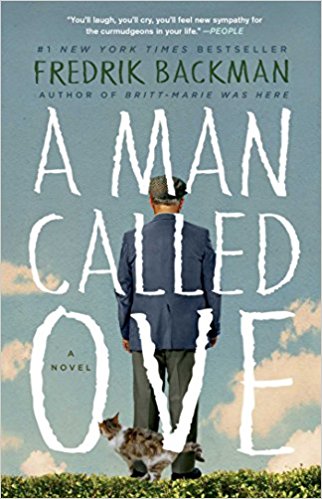When President Nelson announced this new home-centered and Church-supported curriculum, I jumped for joy. (And no, it wasn’t just the shorter two-hour church block.) But then after the joy came the realization that this is going to be a lot of work to make it happen in our home.
For context, we’ve got three children, ages 6, 4, and 2.

If that hasn’t scared you yet, then I’ll add that my children have inherited a very high energy level from their father… which I think is terribly unjust. Because I was a very reverent, quiet, and well-behaved child, but now I have to wrangle these guys. I thought it was only the high-energy kids who got cursed to have children like this, but it turns out we quiet people get blessed with them, too.
So here’s how we do it at our house. (So far, anyway.)
Nightly Evening Devotions
We already have a habit of getting together every night for worship. I’ll get to what we do on Sundays later, but I think the focus rightly should be done on the nightly scripture study. This is how we do it:
- First, we sing a hymn. We’ve been following the suggestions for a hymn rotation at By Study and Faith. Our kids tend to yell-sing these, and honestly, we’ve decided to teach them how to sing sweetly and reverently… later in life. For now, we are simply pleased that they are learning to love the hymns.
- Second, we get out our scripture memory box, which uses the memory system from Simply Charlotte Mason, and recite scriptures. We got the habit of reciting memorized scripture from my husband’s family, and I added the memory box system so we didn’t pick the same verses to recite every single night… (I have only one school-aged child, and because we do scriptures as a family, she has a separate memory box for poetry and other school-related memory work. I don’t assign her extra scriptures to memorize.) Real-life reality check: a lot of the time, the kids aren’t reciting them with us parents. We much prefer when they do, but it doesn’t always work out that way. Somehow they are learning the verses anyway; we begin learning a new verse once the 4-year-old seems to have gotten it mostly right.
- Third, Dad reads a short passage from scripture. We are working through the New Testament to stay aligned with the Come, Follow Me curriculum. The key to this part is to only read a short passage, and to read it with feeling, because, yes, it’s King James English. Remember that can be kind of like learning a new language, so intonation is key to conveying the meaning to small children.
- Fourth, we narrate, or, in other words, we ask everyone to tell in their own words what we just read. We don’t really press the issue with our 4-year-old or 2-year-old, but we do give them the opportunity. Now, lest you think our 6-year-old is a master of King James English, I must reassure you that a lot of the time, none of the children have understood the passage. In this case, the grownups retell the passage in their own words. That’s okay.
- Fifth, we pray.
- And then the chaos of bedtime begins. Ahem.
All in all, it currently takes us maybe ten minutes. (On a good night.) I won’t lie, it does sometimes take longer, but it’s definitely never longer than twenty.
I chose ahead of time which scriptures we’ll be reading nightly, because I knew that if we were spending time figuring out where to read, and for how long… it wasn’t going to happen, and when it did, there’d be a few minutes wasted on decision-making. I know for many having a pre-set schedule is stifling; but for some (like me!) a schedule is a tool that can help keep us on track, so long as we don’t let it rule us.
So I’ll share our schedule, but before I do so, I must insist that when you have a schedule like this, you simply MUST make it your servant, and not your master. It is a tool, not a slave driver. So, we happen to have a schedule to keep us roughly on track, but you have to remember that sometimes we have to skip bits, or some nights all the littles fell asleep before scriptures happened, or watched a Bible video instead, or even spread one important reading out longer and never got to others… you get the idea.
I particularly like what Elder Cook said in General Conference about the new curriculum: “We trust you to counsel together and to seek revelation for implementing these adjustments–while not looking beyond the mark or trying to regiment individuals or families.” I like the reminder not to get caught up trying to regiment our learning; the goal isn’t to read every single verse of the New Testament and have a deep conversation about every chapter; instead we are looking to deepen conversion.
So, without further ado, here is our reading schedule. If you’d like to use it, feel free to do so, so long as you mix it with brains, as Charlotte Mason would say, and then mix it again with a hefty dosing of the Spirit of God. You might notice that as the year goes on it starts to get ahead of the weekly schedule, because near the end of the year, we are at times assigned LOTS of heavy chapters in a single week, and I hoped to at least spread out the load more evenly.
Parental Preparation
Both my husband and I are reading ahead of our schedule in our personal scripture study, so we are very familiar with the passages we read to the children beforehand. This helps us ponder beforehand how we can help our kids understand the passages we read.
On Sunday
We have 9’o’clock church, so that’s over at 11’o’clock. We come home and eat lunch, have some time to run around and be crazy kids, and then some time in the afternoon or evening, we have Family Home Evening. Or Family Home Afternoon. Whatever.
Now, I have delegated the responsibility for this lesson to my husband. President Eyring’s talk in the general women’s session of the October 2018 conference reminded me that “Mother are primarily responsible for the nurture of their children,” and taught me that “This includes the nurture of gospel truth and knowledge.” So I made the big plans, and then delegated this part to my husband.
I told him simply to look over the Come, Follow Me lesson material for that week, and then either pick one of their activities and do it, or come up with his own idea. I have a feeling we’re not going to use the manual itself overly much.
Last week, we remembered how God demonstrated His capacity to work impossible things in the lives of Mary and Elizabeth: Mary the virgin conceived Jesus, and Elizabeth conceived John in her old age. Seemingly impossible things, but God made them happen. So, we thought of things that seemed impossible in our own lives, that God can help us with.
I am in recovery for food-related trauma, and my impossible blessing is to learn to enjoy eating and preparing food for our family again. One of my sons has panic attacks, and his impossible blessing is to learn to stay calm. My husband’s impossible goal is to become an astronaut. You get the idea.
On Monday Night
Since Family Home Evening basically got switched over to Sunday, we are now using that time for Family Fun Night. Examples so far include making gingerbread cookies and playing No Thank You Evil (a children’s game a lot like D&D).
Conclusion
And that’s it!
Now, I must conclude with a reminder that the harmonized curriculum has a purpose, which, if we manage to remember, should help us not get overwhelmed, and realize our small, imperfect efforts make a difference. “The goal of these adjustments is to obtain a deep and lasting conversion of adults and the rising generation.” “The aim of all gospel learning and teaching is to deepen our conversion and help us become more like Jesus Christ. … This means relying on Christ to change our hearts.” “It required consistent, daily efforts to understand and live the gospel. True conversion requires the influence of the Holy Ghost.”
So remember, conversion to Christ is the goal! And we are doing it by digging more into the scriptures as families. I think it’s a great plan.


 You know, I wasn’t expecting much out of this book. I have heard SO MANY TIMES that this is the most boring of Jane Austen’s novels, and that Fanny Price is too… I don’t know, too prim, too perfect, too nauseatingly virtuous to be exciting enough to read about.
You know, I wasn’t expecting much out of this book. I have heard SO MANY TIMES that this is the most boring of Jane Austen’s novels, and that Fanny Price is too… I don’t know, too prim, too perfect, too nauseatingly virtuous to be exciting enough to read about.


 Okay, so basically I think it’s time to admit that, despite this blog being mostly book reviews, I’m actually not all that good at reviewing books. Doom.
Okay, so basically I think it’s time to admit that, despite this blog being mostly book reviews, I’m actually not all that good at reviewing books. Doom.




